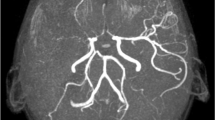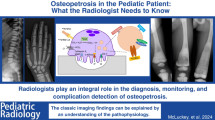Abstract
Schimke immuno-osseous dysplasia (SIOD) is a rare autosomal recessive spondylo-epiphyseal dysplasia. The characteristic features of SIOD include 1) short stature with hyperpigmented macules and an unusual facies, 2) proteinuria with progressive renal failure, 3) lymphopenia with recurrent infections, and 4) cerebral ischaemia. Although 25 patients have been reported with this disorder, the clinical course and phenotype of SIOD are not well characterized. This report summarizes the clinical findings, course and treatment of reported patients and includes 14 additional patients with SIOD. We emphasize the high incidence of cerebral ischaemia and ocular abnormalities, define the high incidence of thyroid dysfunction and blood cytopenia, and confirm the absence of effective and durable medical therapies.
Conclusion Schimke immuno-osseous dysplasia is a multi-system autosomal recessive disorder with variable expression that affects the skeletal, renal, immune, vascular, and haematopoietic systems. Medical therapy is limited especially for more severely affected individuals.
Similar content being viewed by others
Author information
Authors and Affiliations
Additional information
Received: 16 November 1998 / Accepted: 15 June 1999
Rights and permissions
About this article
Cite this article
Boerkoel, C., O'Neill, S., André, J. et al. Manifestations and treatment of Schimke immuno-osseous dysplasia: 14 new cases and a review of the literature. Eur J Pediatr 159, 1–7 (2000). https://doi.org/10.1007/s004310050001
Issue Date:
DOI: https://doi.org/10.1007/s004310050001




